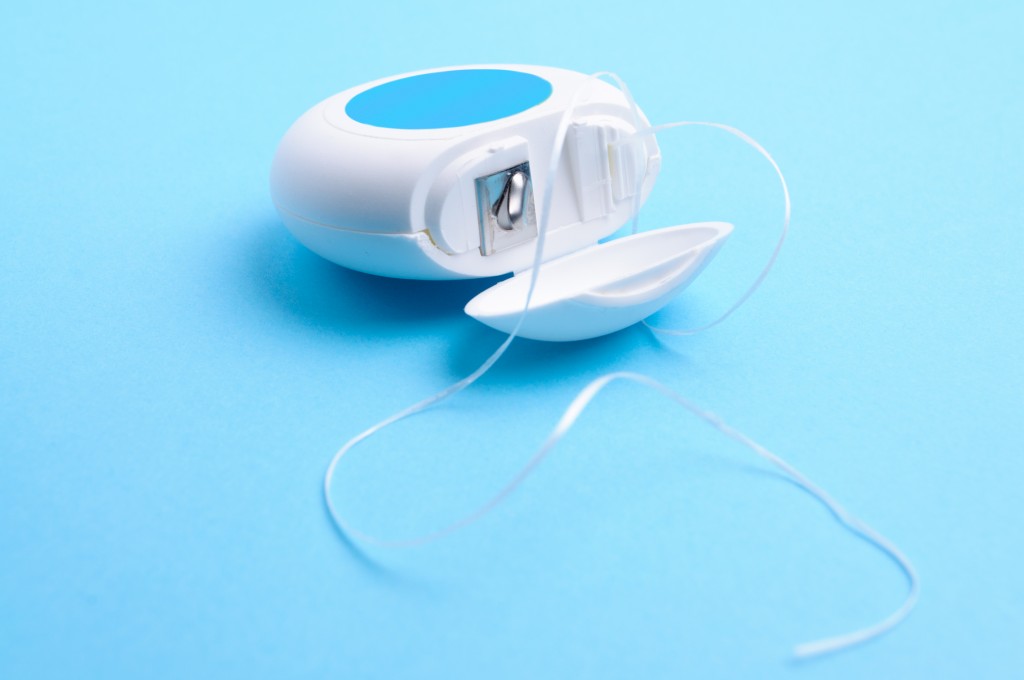 We have all been trained to seat restorations with a solid contact to adjacent teeth. We usually determine this with the "snap" of the floss. It's a happy day when we achieve that, but there will be times that it's just not there. The contact may be light, so you might switch to a floss that gives you more of a snap. But if the contact is still light, you then have to decide to cement it anyway or return it to the lab to have contact added.
We have all been trained to seat restorations with a solid contact to adjacent teeth. We usually determine this with the "snap" of the floss. It's a happy day when we achieve that, but there will be times that it's just not there. The contact may be light, so you might switch to a floss that gives you more of a snap. But if the contact is still light, you then have to decide to cement it anyway or return it to the lab to have contact added.Sometimes its clinically obvious that the contact is open and you may start weighing the risk of cementing – and have the patient return complaining of food impaction – or returning it to the lab – and have the patient complain of waiting two more weeks to complete treatment. I imagine this problem is less ubiquitous with CEREC designed restorations, but I know there are many dentists who still make conventional VPS impressions and utilize a lab to fabricate the restorations.
I thought it would be good to review why this contact issue can happen...
First, I always think about what is going on with my provisional. Has the contact been open during the time the restoration was being lab-fabricated? Was the provisional too tight or too light? The chances are pretty high that if your temporary doesn't have the contact you would expect from the final restoration, that the tooth or adjacent teeth will move and the final restoration will not have contact either.
Take the time to check this step; it's so easy to flow a little more composite on it to get a secure contact with our bisacryl materials. Some dentists have their assistant make the provisional, so reviewing these details with your assistant can result in less adjusting time for you. If the provisional is ideal, your chances of the final restoration seating the same way are very good. Unless…
Your lab uses a sectioned cast to make the restoration. I struggled with this for years when I used a lab that did that. Some labs will scrape the contact on the adjacent teeth before fabricating the restoration to ensure a tight contact, but this is still unpredictable. Utilizing a solid model is the best safeguard for ensuring the perfect contact.
If the restoration has to be returned for additional contact, you want to give your technician the best shot at fixing it quickly and predictably. My technician stated that dentists perform a variety of techniques to replicate the information to them. Some will just pencil it in and say add contact here. Some will add resin pattern and return it and some will add composite and return it (with the associated risk of it detaching). However, the most ideal technique is to seat the crown and make a quadrant VPS impression.
Giving the lab the information this way will ensure the perfect contact you want, but you still want to make sure your provisional is spot on when you re-cement it. It becomes frustrating for you and your patient when the problem hasn't resolved after a second laboratory adjustment.
Mary Anne Salcetti, DDS, PC, Spear Visiting Faculty. [ www.maryannesalcettidds.com ]

Want to learn even more about clinical topics like this? Check out what your esteemed colleagues, including the Spear Faculty, are saying on our discussion boards. Don't have access yet? Sign-up now for free.